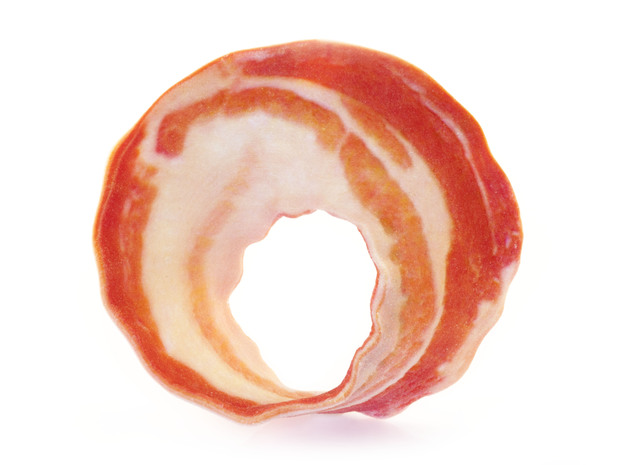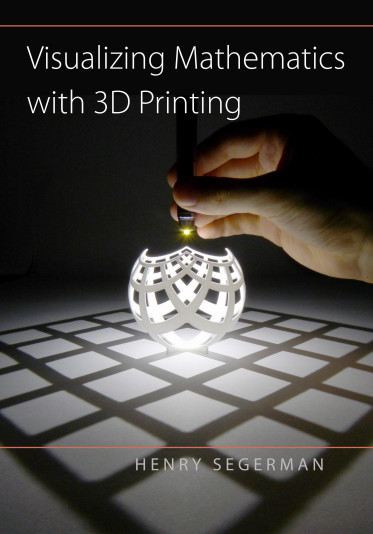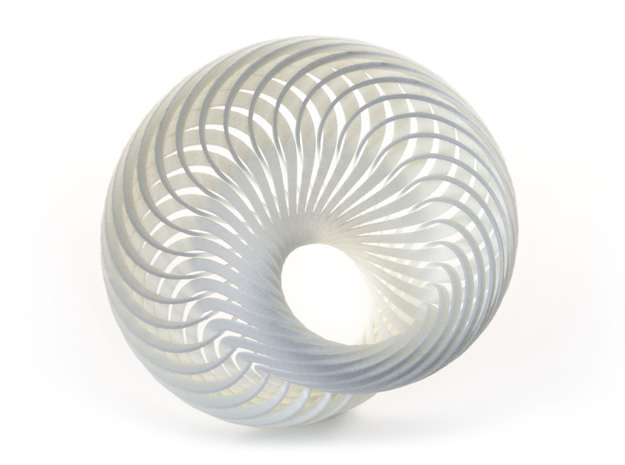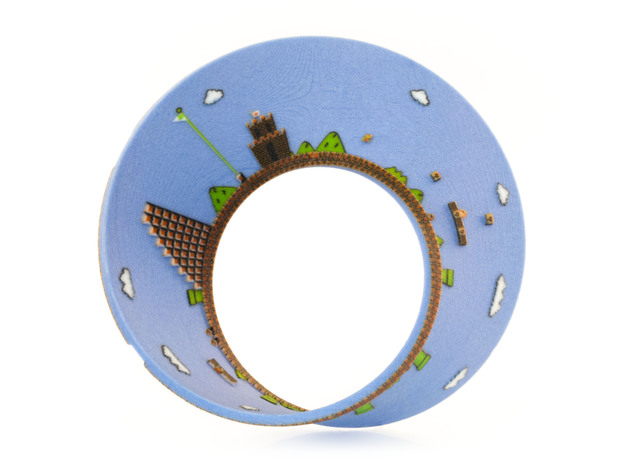
Our Holiday Gift Guide is full of creative versions of the Möbius Strip. What is this magical shape, and how did it get its name? Thankfully, mathematician, guest blogger, and Shapeways Shop owner Henry Segerman is here to reveal the secrets of the strip. Henry’s new book, Visualizing Mathematics with 3D Printing explains beautiful mathematical ideas using 3D prints made by Shapeways!
What is a Möbius Strip?
Möbius (or Moebius) strips are a popular subject on Shapeways, from Joaquin Baldwin’s Mobius Nautilus and Bacon Mobius Strip, to stop4stuff’s Twin Rail Mobius, The Magic Shop’s Moebius Cup and 8 bit Nirvana’s Super Mario Mobius Strip. But what is a Möbius strip? And where did it come from?
The Möbius strip is named after August Ferdinand Möbius, a German mathematician who discovered it in 1858. In case you don’t happen to have a 3D printed one handy, you can also make one from a strip of paper by taping the ends together, after adding a half-twist. The Möbius strip is an example of what mathematicians call a “surface” — a geometric object that is essentially two-dimensional: if you look at a small patch of it, it looks the same as a small patch of the two-dimensional plane. Of course, any paper or 3D printed model has to have some three-dimensional thickness, but a perfect mathematical surface has zero thickness.
Famously, the Möbius strip has only one side: if you start painting one side of it, you will find that you end up painting the “other” side as well. If you are Mario, for example, running around 8 bit Nirvana’s Level 1-1, you run around the loop twice before you get back to where you started, passing by on both sides of each patch of surface that makes up the Möbius strip. Perhaps less well-known is the fact that the Möbius strip also has only one edge. The ground that Mario runs along wraps all the way around the one edge of 8 bit Nirvana’s strip. It might look like the top of the flagpole is at a different edge from the bottom, but the ground is also at that edge, on the back side of the strip!
What about different numbers of half-twists? If you don’t put any twist in your strip before you tape the edges together you get what mathematicians call an “annulus”, from the Latin word for “little ring”. It’s the curved part of a cylinder, or the cardboard tube inside a roll of toilet paper. You could also put in two half-twists, as in Mind Eversion‘s Hopf Ring. Or three half-twists, as in Mind Eversion’s trefoil Moebius Pendant. If you put in two half-twists, you again get two sides and two edges, just like the annulus. And, if you put in three half-twists, you again get one side and one edge, just like the Möbius strip.
In fact, thinking about the surfaces themselves, rather than the way Mind Eversion chose to put them in three-dimensional space, they are the annulus and the Möbius strip. If Mario is stuck in the two-dimensional world of Level 1-1, and he can’t see out into three-dimensional space, it turns out that there’s nothing he can do to tell whether the strip he lives on is twisted one half turn, or three half turns, or actually any odd number of half turns. So, from the perspective of the surfaces, they are all just copies of the Möbius strip. On the other hand, Mario can tell if he’s on a strip with an even number of half-twists, because that surface has two sides, and he would never be able to get to the other side.
So, why do people like the Möbius strip so much? Maybe part of it is that there is twice as much space to draw or write on than for an ordinary annulus ring. 8 bit Nirvana’s Level 1-1 print would have had to be twice as long if they had used an annulus. But I think it’s more about the surprise and the paradox, that a twist in a surface can make it have only one side.
For more on how math can be used to create incredible 3D designs, check out Henry’s new book.








Hello,
Very nice presentation on the Ribbons moëbius! It turns out that I draw a lot of mobius for shapeway, from the pendant to the lamppost through the sculpture.
Discover all my models on: http://www.shapeways.com/shops/3cwjr
As far as I am concerned, I would rather describe some creations as VOLUMES of mobius (instead of ribbon), some have several turns and have more than 2 faces. You can also draw online models similar to my creations online on http: 3cw.free.fr (site that belongs to me).
Thank you for this post that allows me to express myself a bit on this subject of predilection! (Google translation because I am French and do not speak English)
////////////////
Texte original en français : Bonjour,
Très bel exposé sur les Rubans moëbius ! Il se touve que je dessine enormément de mobius pour shapeway , du pendentif au lampadaire en passant par la sculpture.
Découvrez tous mes models sur : http://www.shapeways.com/shops/3cwjr
Pour ce qui me concerne je qualifierai plutôt certaines créations comme des VOLUMES de mobius (au lieu de ruban) , certains ont plusieurs tours et comportent plus de 2 faces. Vous aussi vous pouvez dessiner en ligne des modèles semblables à mes créations en ligne sur http:3cw.free.fr ( site qui m’appartient) .
Merci pour ce post qui me permet de m’exprimer un peu sur ce sujet de prédilection ! ( traduction google car je suis français et ne parle pas anglais)
Site link for construction mobius: http://3cw.free.fr
I always love to see articles about Mobius Strips. Thanks for this discussion. I do, however, think that your discussion would benefit from a reference to Martin Gardner’s “Mathematical Games” columns about Mobius Strips (Jun. 1957 or Dec. 1968) . You might even include a short section summarizing the remarkable results of cutting a Mobius Strip along the length of the Strip.
Agree!